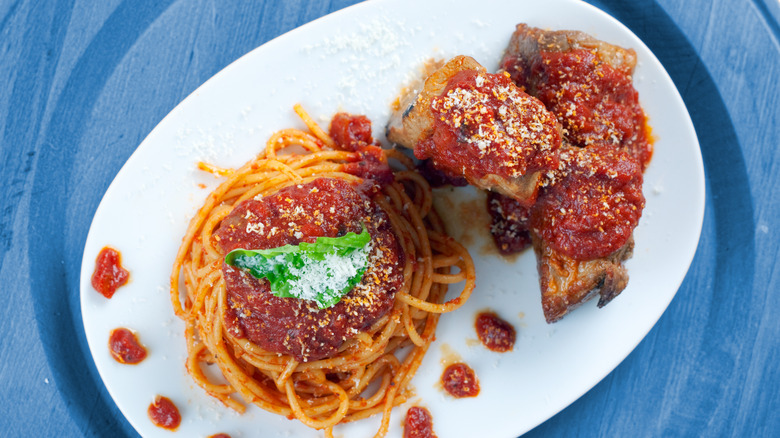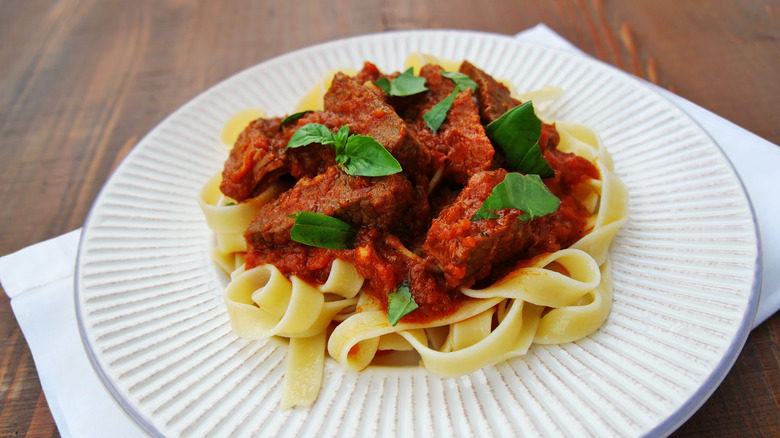The Neapolitan Origins Of Italian-American Sunday Gravy
Sunday gravy may be the most indelible image of Italian-American culture. Sunday gravy – also called Sunday sauce — is a meat and tomato sauce served over pasta and a staple of home cooking in American cities with a large Italian immigrant population. A vat of sauce overflowing with sausage, meatballs, ribs, or whatever else your family told you was essential to making it, it's not a subtle dish. Instead, it's a weekly celebration, an embrace of bounty, and a tribute to the joy of food in one pot. Sunday gravy is also a classic family dish, not only because it's usually eaten as a big family meal but because distinct recipes are passed down through generations.
Like any immigrant cuisine, Italian-American cooking is a mix of original recipes adapted to the tastes and ingredients of their new home. Dishes like chicken parmesan and marsala are both based on ingredients or preexisting dishes in Italy but became American with the addition of chicken, which was cheaper and more plentiful in the United States than it was in the old country. Sunday gravy, on the other hand, is actually one of the most straightforward culinary transfers from Italy to the U.S. Perhaps owing to its inherent variability, very little changed from the dish Sunday gravy is based on when it crossed the Atlantic. It came from the city of Naples and the region of Campania, and it is as beloved there as Sunday gravy is over here.
Sunday gravy is the Italian-American version of Neapolitan ragù
Italian ragùs are a whole world unto themselves, as they include basically any meat-based pasta sauce, but two classics have come to define the genre. One is the familiar Bolognese, the famous Northern Italian sauce of chopped meat, which traditionally includes few or no tomatoes. The other is less well known in the U.S. by its original name, Neapolitan ragù, but it is the tomato-sauce ragù that became Sunday gravy. Beyond tomatoes, the defining difference between the regions' ragùs is how the meat is treated. In the Neapolitan version, the meat is cooked whole in the sauce, as opposed to the minced or ground meat in Bolognese. Neapolitan ragù also usually includes multiple different cuts of meat, from beef short ribs to pork chops, that will vary by region and chef.
While both Bolognese and Neapolitan sauces made their way to America, the Southern version came to define Italian-American dinners for the simple reason that most immigrants came from Southern Italy. Its long simmering time lent itself to weekend cooking, and by the mid-20th century, it had adopted its Americanized nomenclature of "gravy," becoming the tradition that many Italian families love to this day. In the process, there were only a few small changes, spaghetti became the favored pasta, the meat was served in the sauce instead of on the side, and meatballs were more common. Beyond that, Sunday gravy is a Neapolitan ragù in every way but name.

